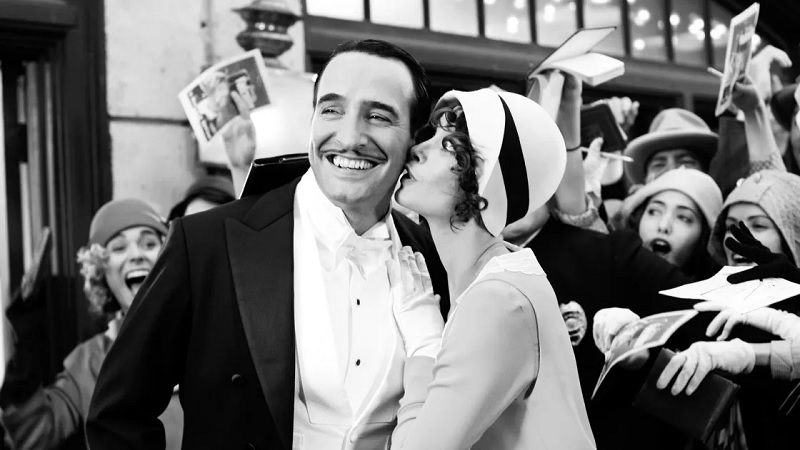Michel Hazanavicius’s 2011 film, The Artist, is a dazzling and paradoxical achievement: an original screenplay that won an Academy Award for its narrative set almost entirely in the style of a black-and-white silent movie. The genius of its screenwriting lies not in witty dialogue, but in a profound understanding and masterful reapplication of the visual storytelling techniques of this bygone era. The script is an homage, a melodrama and a poignant exploration of change, all conveyed through the power of image, action and music.

The Artist centres on the decline of silent film star George Valentin and the simultaneous rise of ingenue Peppy Miller as “talkies” (sound films) revolutionize Hollywood. This classic ‘rise-and-fall’ narrative structure, often found in melodramas, provides a clear, strong backbone that is essential for a film with minimal dialogue.
The Power of Visual Storytelling
In a traditional screenplay, dialogue is crucial for exposition, character development and plot progression. Hazanavicius, however, was forced to abide by the “show, don’t tell” principle in its purest form.
Action Lines as Dialogue: The screenplay relies heavily on meticulous and descriptive action lines. Every gesture, facial expression and physical action had to be written not just to convey movement, but to substitute spoken words. When George’s wife, Doris, shows him a newspaper revealing his public encounter with Peppy, her cold indifference and silent anger are palpable on the page and screen, communicated entirely through her physical reaction and the staging of the scene.
The Power of Performance and Blocking: The script demanded actors who could project internal conflict and emotion visually, a style often associated with the exaggerated performances of the 1920s. Hazanavicius used this to his advantage, crafting scenes where the blocking and movement of the characters – their physical proximity, their isolation or their dramatic sweep – convey the emotional story.
Minimalist Use of Intertitles: While Hazanavicius included intertitles (title cards) to convey necessary dialogue or plot points, they are used sparingly. This discipline forces the filmmaker and the audience to invest in the visual language, mirroring the transition toward more cinematic, less text-dependent silent films of the late 1920s.
Form as Message: Medium and Theme
The screenplay expertly marries its unique form with its core themes. The very style of the film is a direct comment on its subject matter.
The conflict between the past and the future is central to the script: George Valentin clinging to the silent, visual medium he mastered, while Peppy Miller enthusiastically embraces the new, aural world of the talkies. The film’s silence itself becomes a metaphor for George’s personal and professional stagnation, only to be dramatically broken at moments of crisis or, ultimately, transformation.
The Dream Sequence: The key turning point in George’s psychological decline is a surreal dream sequence where sound suddenly invades his silent world – the noise of a glass hitting the table, his dog’s bark, the sound of his own breathing, but no voice when he tries to scream. This single scene, explicitly written in the script to utilize sound, is a profound and terrifying cinematic device that drives home George’s fear of the changing industry better than any line of dialogue could.
Juxtaposed Arcs: The screenwriting cleverly uses inverse character arcs for George and Peppy. George’s financial and emotional descent (from riches to rags) is constantly juxtaposed with Peppy’s meteoric rise to stardom. This dramatic irony is used to enrich the story, providing contrast and heightening the stakes of George’s struggle. The visual contrast – George in threadbare clothing vs. Peppy in glamorous fashion—conveys their opposing fortunes instantly.
The Role of Sound and Music
Paradoxically for a silent film, the sound design and musical score are essential screenwriting tools in The Artist.
The screenplay essentially uses the score as a narrative engine and emotional guide. The script’s musical cues and emotional rhythm are closely linked to the story structure, with the score filling the emotional space where dialogue would typically be. The choice of music, often grand and sweeping orchestral scores, mimics the style of the silent era, underscoring the film’s melodramatic heart.
The Artist‘s screenwriting triumph is its ability to craft a story that feels both nostalgic and utterly fresh, proving that the fundamentals of dramatic storytelling -character, conflict, and emotional stakes – are timeless and can be conveyed through the most fundamental and universal cinematic language: the visual.
